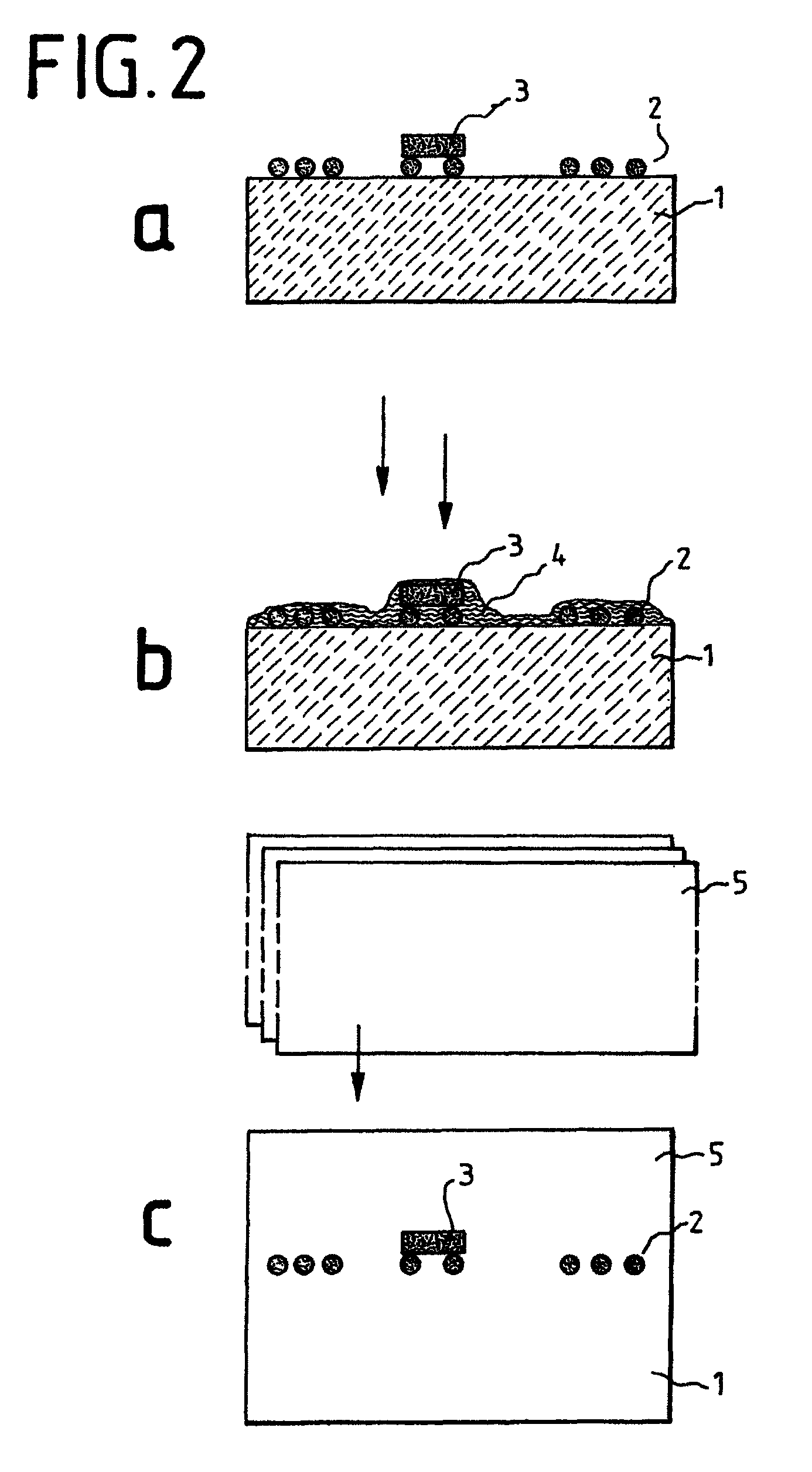Method for producing a polycarbonate layered composite
a technology of polycarbonate and composites, applied in the direction of synthetic resin layered products, paper/cardboard containers, transportation and packaging, etc., can solve the problems of mechanical destruction of the chip, premature destruction or reduction of the life time of the components, and increase the mechanical pressure, so as to achieve substantial material savings and favorable effects
- Summary
- Abstract
- Description
- Claims
- Application Information
AI Technical Summary
Benefits of technology
Problems solved by technology
Method used
Image
Examples
example 1
Making Polycarbonate Derivatives to be Used According to the Invention
example 1.1
Making a First Polycarbonate Derivative
[0066]205.7 g (0.90 mole) bisphenol A (2,2-bis-(4-hydroxyphenyl)-propane, 30.7 g (0.10 mole) 1,1-bis-(4-hydroxyphenyl)-3,3,5-trimethyl cyclohexane, 336.6 g (6 mole) KOH and 2,700 g water are dissolved in an inert gas atmosphere under stirring. Then a solution of 1.88 g phenol in 2,500 ml methylene chloride is added. Into the well stirred solution, 198 g (2 mole) phosgene are introduced at pH 13 to 14 and 21 to 25° C. Then 1 ml ethylpiperidine is added and stirred for another 45 min. The bisphenolate-free aqueous phase is separated, after acidification with phosphoric acid, the organic phase is washed neutrally with water and freed from solvent.
[0067]The polycarbonate derivative had a relative solution viscosity of 1.255.
example 1.2
Making a Second Polycarbonate Derivative
[0068]In an analogous manner to Example 1.1, a mixture of 181.4 g (0.79 mole) bisphenol A and 63.7 g (0.21 mole) 1,1-bis-(4-hydroxyphenyl)-3,3,5-trimethyl cyclohexane was reacted to the polycarbonate.
[0069]The polycarbonate derivative has a relative solution viscosity of 1.263.
PUM
| Property | Measurement | Unit |
|---|---|---|
| temperature | aaaaa | aaaaa |
| molar ratio | aaaaa | aaaaa |
| glass temperature Tg | aaaaa | aaaaa |
Abstract
Description
Claims
Application Information
 Login to View More
Login to View More - Generate Ideas
- Intellectual Property
- Life Sciences
- Materials
- Tech Scout
- Unparalleled Data Quality
- Higher Quality Content
- 60% Fewer Hallucinations
Browse by: Latest US Patents, China's latest patents, Technical Efficacy Thesaurus, Application Domain, Technology Topic, Popular Technical Reports.
© 2025 PatSnap. All rights reserved.Legal|Privacy policy|Modern Slavery Act Transparency Statement|Sitemap|About US| Contact US: help@patsnap.com



